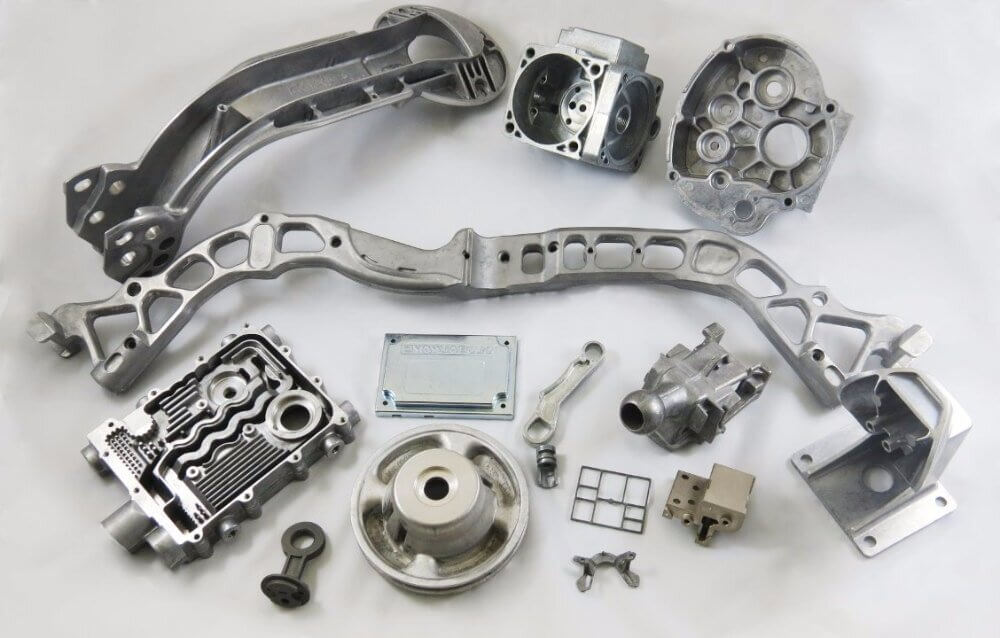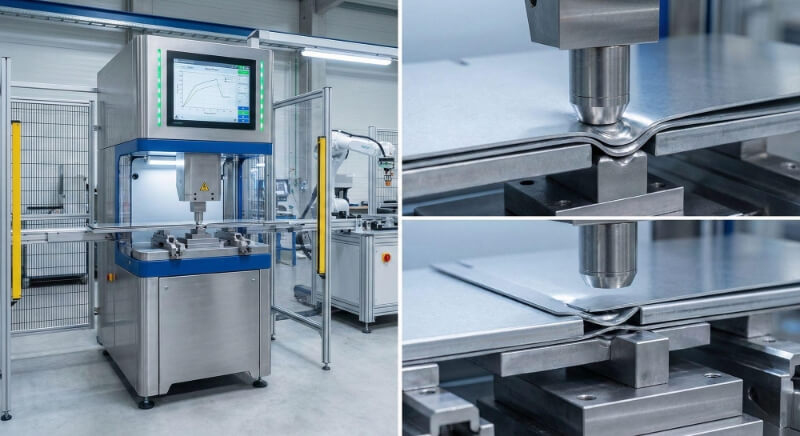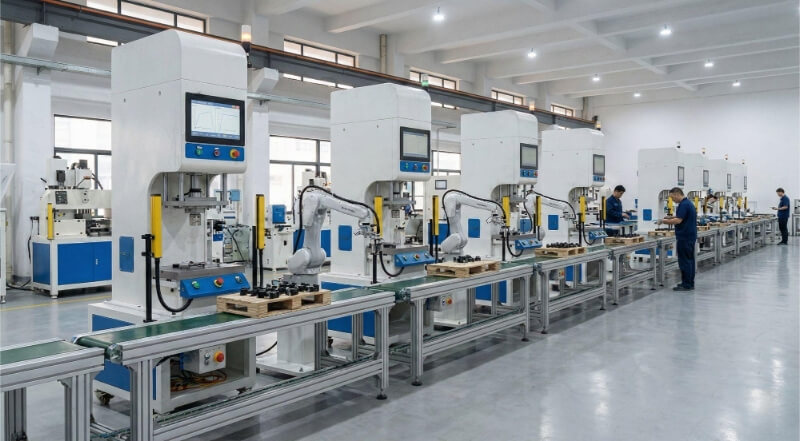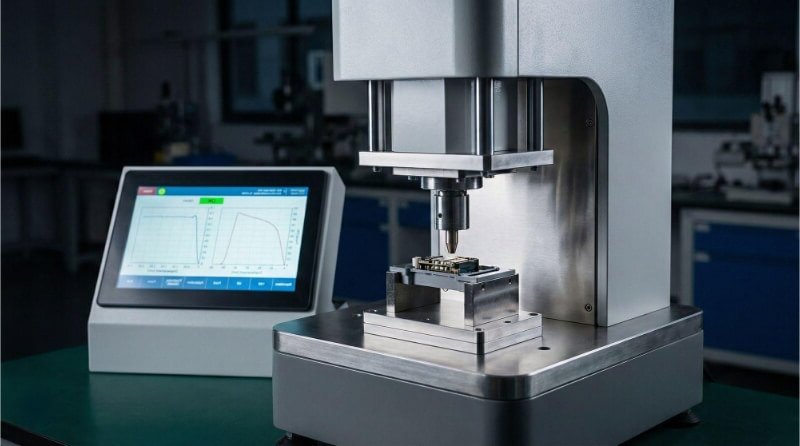Are you seeking a manufacturing method that produces strong, high-quality metal parts with precise details and a smooth surface? Gravity die casting might be the solution. This technique uses gravity to pour molten metal into a mold, creating parts widely used in automotive, aerospace, and other industries.
This method could be a great option if you need durable, consistent metal parts. Let’s examine how it works and where it is used.

What is Gravity Die Casting?
Gravity die casting is a metal casting process where molten metal is poured into a reusable mold using gravity. Unlike some external pressure methods, this process relies solely on gravity to fill the mold. The result is parts with few defects and high precision.
The process begins by heating the metal until it becomes molten. Once it reaches the correct temperature, the molten metal is poured into a mold. The mold is preheated to prevent thermal shock and ensure even filling of the cavity. Gravity pulls the molten metal into the mold, which cools and hardens.
How Does Gravity Die Casting Work? Step-by-Step
Gravity die casting is a simple process involving several steps to ensure precision and quality. Here’s a breakdown of how it works:
Step 1: Prepare the Mold
The first step is preparing the mold. Before using the mold, it is preheated to prevent thermal shock and to help the metal flow more smoothly.
Step 2: Melt the Metal
Next, the metal is heated in a furnace until it becomes molten. The temperature varies depending on the metal.
Step 3: Pour the Molten Metal into the Mold
Once the metal has melted, it is poured into the mold under gravity. The mold is kept at an angle or level to allow the molten metal to flow into every cavity.
Step 4: Allow the Metal to Cool and Solidify
Once the mold is filled, the molten metal starts to cool. As it cools, it solidifies and takes the mold’s shape.
Step 5: Remove the Part from the Mold
After the metal has cooled and solidified, the mold is opened to reveal the finished part. Gravity die casting molds are designed to be easily opened to remove the cast part without damage.

Key Considerations in Gravity Die Casting
Several important factors must be considered when working with gravity die casting to ensure the production of high-quality parts. These factors can affect the final product’s efficiency, durability, and precision.
Material Properties and Selection Criteria
Choosing the right material is crucial in gravity die casting. The material affects the cast parts’ strength, performance, and durability. Common materials used include aluminum, zinc, and brass alloys, each offering different benefits for various applications.
- Aluminum is light, corrosion-resistant, and strong. It is often used for automotive and aerospace parts.
- Zinc has excellent castability, low melting points, and good strength. It is commonly used for electrical components.
- Brass is strong and easy to machine, making it ideal for decorative parts.
Mold Life and Maintenance
Mold life is another key factor in gravity die casting. Because of the high temperatures and repeated use, molds can wear out over time, which can affect the quality and efficiency of the process.
- Mold Design: A well-designed mold lasts longer by reducing wear and tear.
- Regular Inspection and Maintenance: Regular checks for cracks, erosion, or damage help prevent defects in the cast parts.
- Reconditioning: Some molds can be reconditioned, saving costs and maintaining consistency.
Process Control and Quality Assurance
Gravity die casting requires careful process control and quality assurance to ensure high-quality parts.
- Temperature Control: Monitoring the molten metal temperature is crucial. Too high or too low a temperature can lead to defects like weak areas or porosity.
- Metal Flow: The molten metal must flow evenly into the mold to avoid air pockets or incomplete filling.
- Cooling Rate: The cooling rate should be controlled to prevent issues like warping or cracking, ensuring the parts maintain their integrity.
Benefits of Gravity Die Casting
Gravity die casting is highly effective for producing durable and precise metal parts. Let’s explore the key benefits in detail.
High Precision
Gravity die casting is known for producing parts with tight tolerances and high accuracy. Using a reusable mold and controlled molten metal pouring ensures the final part is precise.
Strength and Durability
Parts made with gravity die casting are strong and durable. Materials like aluminum and zinc alloys are chosen for their properties that enhance the mechanical performance of the parts.
Cost-Effectiveness
The molds are durable and reusable, reducing the cost per part over time. The process doesn’t require expensive high-pressure systems or complex setups, making it cheaper than other casting methods.
Excellent Surface Finish
Gravity die casting produces parts with a smooth surface finish. The process results in parts with few defects and clean surfaces, often needing less post-processing.
Reduced Porosity
Porosity, or air pockets in the material, is a common issue in metal casting. Gravity die casting, thanks to its controlled filling process, helps reduce porosity.

Challenges and Limitations
While gravity die casting offers many benefits, it presents specific challenges and limitations. Understanding these issues helps manufacturers mitigate risks and improve the casting process.
Casting Defects in Gravity Die Casting
Despite its high precision, gravity die casting can still experience casting defects. These defects can impact the strength and quality of the final parts, leading to production delays or additional rework.
Common Defects: Porosity, Shrinkage, and Cracking
- Porosity: Small air pockets or voids can form within the cast part, reducing strength. This often occurs when the molten metal doesn’t fill the mold or the metal cools too quickly.
- Shrinkage: As the metal cools, it may contract, leading to areas of reduced density and strength. Shrinkage can affect the part’s structural integrity and lead to a poor surface finish.
- Cracking: Cracks can occur during the cooling phase, often due to rapid cooling or improper mold design. This affects the part’s durability and can result in costly defects.
Solutions for Minimizing Casting Defects
To reduce these defects, manufacturers can:
- Control the temperature of the molten metal to prevent rapid cooling and shrinkage.
- Optimize the mold design for better metal flow and avoid air entrapment.
- Advanced quality control techniques, such as X-ray or ultrasonic testing, detect and correct defects early in the process.
Complexity in Mold Design
Mold design plays a crucial role in the success of gravity die casting. While the process is relatively simple, creating molds that can withstand repeated use and provide consistent results can be challenging.
Factors Affecting Mold Design Choices
- Material Selection: Molds must be made from durable materials like steel or cast iron, which can handle high temperatures and repeated exposure to molten metal.
- Heat Dissipation: The mold must be designed for controlled cooling to avoid defects such as warping or cracking.
- Shape Complexity: More complex part geometries can increase the difficulty of mold design, requiring specialized techniques to ensure complete filling and proper cooling.
Limitations on Part Size and Thickness
Gravity die casting is not ideal for very large or extremely thick parts. The process is better suited for medium-sized parts with wall thicknesses within a specific range.
- Part Size: Large parts can be complex to cast due to limitations in mold size and the ability to ensure consistent cooling.
- Wall Thickness: Extremely thick parts may experience uneven cooling and shrinkage, leading to defects. Thin-walled parts are more easily produced but require careful metal flow and cooling control to prevent issues like porosity.
Applications of Gravity Die Casting
Gravity die casting is used in many industries because it produces high-quality, durable parts. This method’s versatility makes it suitable for various sectors where precision and strength are needed.
Automotive Industry
In the automotive industry, gravity die casting makes parts like engine blocks, transmission cases, and chassis components. It is preferred for producing lightweight, high-strength parts that improve fuel efficiency and performance.
Aerospace and Defense Industry
The aerospace and defense industries depend on gravity die casting for parts that withstand high stresses and harsh conditions. Components such as housings, structural parts, and engine parts are often made using this method.
Industrial Equipment and Machinery
This method produces common components like pumps, gears, housings, and valves. The parts’ strength and durability make them ideal for heavy-duty applications, where equipment must perform under tough conditions.
Consumer Products
In the consumer products industry, gravity die casting creates items that need functional performance and good looks. This method is often used to make parts such as electronic enclosures, decorative pieces, and kitchen appliances.
What is the Difference Between Die Cast and Gravity Cast?
Die casting and gravity casting are both methods for producing metal parts but have different processes and applications. Understanding these differences can help you choose the proper method for your manufacturing needs.
Process
In die casting, molten metal is injected into a mold under high pressure. A mechanical or hydraulic press forces the molten metal into the mold quickly. The high pressure ensures the mold is filled, leading to high precision and fine details.
In gravity casting, molten metal is poured into a mold using gravity. There is no external pressure. The metal naturally flows into the mold cavity as it cools and solidifies. This process is slower and depends on the weight of the molten metal to fill the mold.
Precision and Complexity
Die casting offers high precision and can produce intricate, complex parts with excellent repeatability. The high pressure ensures tight tolerances and smooth surface finishes.
Gravity casting is generally less precise and may not produce the same level of detail. While it can create complex shapes, parts may require extra finishing work to achieve the desired quality.
Speed
Die casting is faster than gravity casting because of the high-pressure injection. This leads to quicker production rates, making it ideal for high-volume manufacturing.
Gravity casting is slower since the metal fills the mold by gravity, and the process depends more on cooling time.
Part Size and Thickness
Die casting works best for small to medium-sized parts with thin walls. The high pressure allows for the precise casting of detailed shapes, but it may not be suitable for larger or thicker parts.
Gravity casting is better for larger and thicker parts. It works well for components that need a larger mass since the metal has more time to settle and fill the mold.
Conclusion
Gravity die casting is a flexible, cost-effective method for producing high-quality, durable parts. Using gravity to fill the mold ensures precision and minimizes defects. The process creates strong, reliable parts that meet strict standards, with excellent surface finishes and reduced porosity.
Gravity die casting might be the right choice if you need a dependable solution for your manufacturing needs. Contact us today to learn how gravity die casting can improve your production process.
Hey, I'm Kevin Lee

For the past 10 years, I’ve been immersed in various forms of sheet metal fabrication, sharing cool insights here from my experiences across diverse workshops.
Get in touch

Kevin Lee
I have over ten years of professional experience in sheet metal fabrication, specializing in laser cutting, bending, welding, and surface treatment techniques. As the Technical Director at Shengen, I am committed to solving complex manufacturing challenges and driving innovation and quality in each project.




